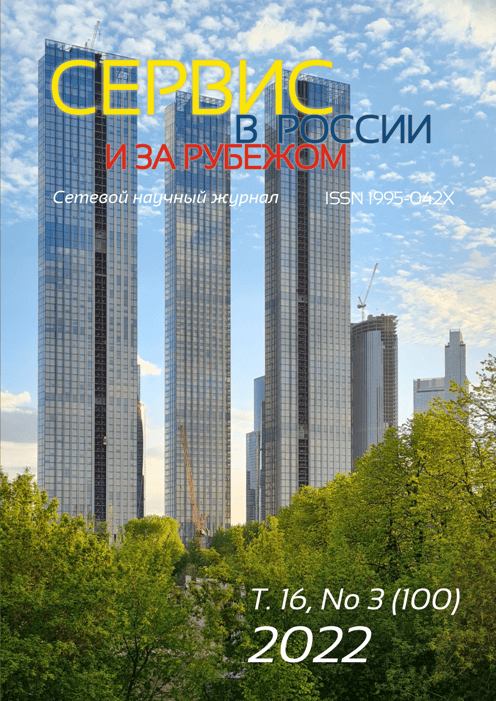Special problems of the mechanism for implementing public-private partnership projects in Russia
DOI:
https://doi.org/10.24412/1995-042X-2022-3-146-153Keywords:
public-private partnership, institutional environment, inter-budgetary transfersAbstract
The purpose of the article is to identify private problems in the implementation of public-private partnership (PPP) projects, through the allocation of financing mechanisms by public entities for PPP projects and the formation of directions for their improvement. The author models the enlarged zonal parts of the implementation of public-private partnership projects in Russia, highlighting the impact of the regulatory and institutional environment on the leading subjects of the Russian Federation. This makes it possible to assess the development of infrastructure within the framework of complex national projects of the country. As a result of data analysis, it is possible to judge the insufficiently developed mechanism of budget planning in relation to the redistribution of funds for the implementation of PPP projects, which is noted by particular problems of allocation of funds. The results obtained indicate the need for legislative procedures in the field of budget allocation of funds in order to achieve high expected performance from public-private partnership projects.
Downloads
References
Вейс Ю.В. Оценка применяемости форм государственно-частного партнерства при осуществлении инвестиционной деятельности России // Научно-технические ведомости Санкт-Петербургского гос. политехнич. ун-та. Экономические науки. 2019. Т.12. №4. С. 134-143. DOI: 10.18721/JE.12412.
Дробот Е.В., Макаров И.Н., Колесников В.В. и др. Государственно-частное партнерство и квазипартнерские формы в инновационном развитии национальной промышленности: институциональный анализ // Вопросы инновационной экономики. 2021. Т.11. №3. С. 1135-1150. DOI: 10.18334/vinec.11.3.113479.
Краснопеева Н.А., Морозкина А.К. Условные бюджетные обязательства по проектам ГЧП в России и БРИКС: оценка и механизмы снижения рисков // Вестник международных организаций: образование, наука, новая экономика. 2021. Т.16. №4. С. 146-170. DOI: 10.17323/1996-7845-2021-04-07.
Кузьмина Л.В. Механизмы ГЧП в сфере транспорта: экономические эффекты и Ключевые проблемы // Экономический вестник ИПУ РАН. 2021. Т.2. №2. С. 26-33. DOI: 10.25728/econbull.2021.2.3-kuzmina.
Набиев Р.А., Лунева Т.В. ГЧП как механизм финансирования проектов сохранения и развития исторической жилой застройки // Polish Journal of Science. 2020. №27-1(27). С. 17-19.
Макаров И.Н., Соловьева В.В., Левчегов О.Н., Крылова А.Д. Налоговый механизм интенсификации креативной деятельности в ГЧП-проектах и особых экономических зонах: организационный и финансово-правовой аспект // Экономика, предпринимательство и право. 2021. Т.11. №12. С. 2847-2856. DOI: 10.18334/epp.11.12.114095.
Наугольнова И.А. Проблемы привлечения инвестиций в проекты ГЧП и МЧП в промышленности // Экономические отношения. 2019. Т.9. №3. С. 2061-2078. DOI: 10.18334/eo.9.3.41050.
Проняева Л.И., Кружкова И.И. Развитие инфраструктуры особых преференциальных зон на условиях государственно-частного партнерства // Вестник ОрелГИЭТ. 2021. №1(55). С. 47-55. DOI: 10.36683/2076-5347-2021-1-55-47-55.
Анненкова А.А., Баранова С.В., Кожанчиков О.И. и др. Региональные аспекты экономического роста в условиях достижения стратегических целей национального развития. Орел: Среднерусский ин-т управления – филиал РАНХиГС, 2020. 260 с.
Шкред В.Н., Мурзин А.Д. Анализ организационного и финансового механизма государственно-частного партнерства в регионах Российской Федерации // Sochi Journal of Economy. 2020. Т.14. №1. С. 92-98.
Downloads
Published
How to Cite
Issue
Section
License
Copyright (c) 2022 I. I. Kruzhkova

This work is licensed under a Creative Commons Attribution-NonCommercial-ShareAlike 4.0 International License.












